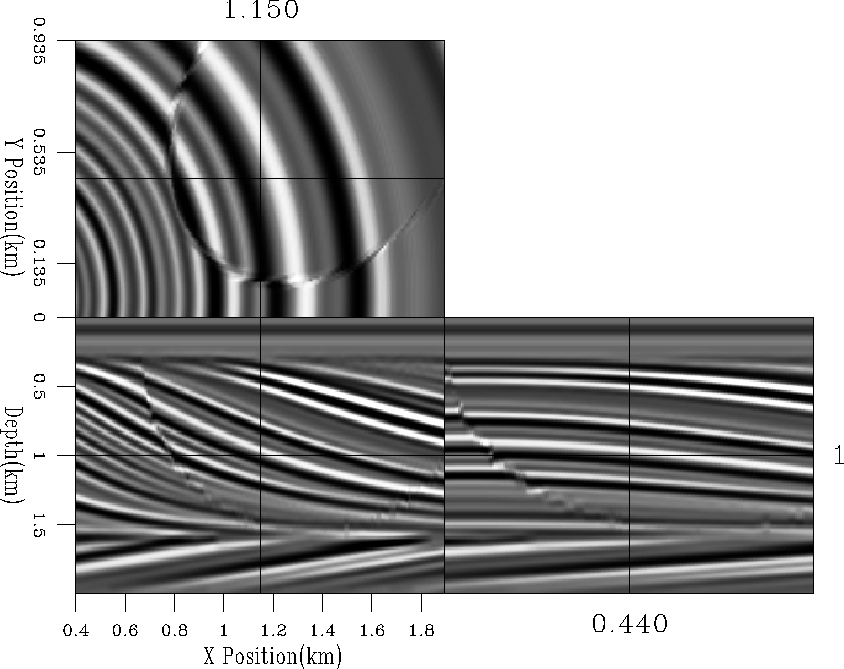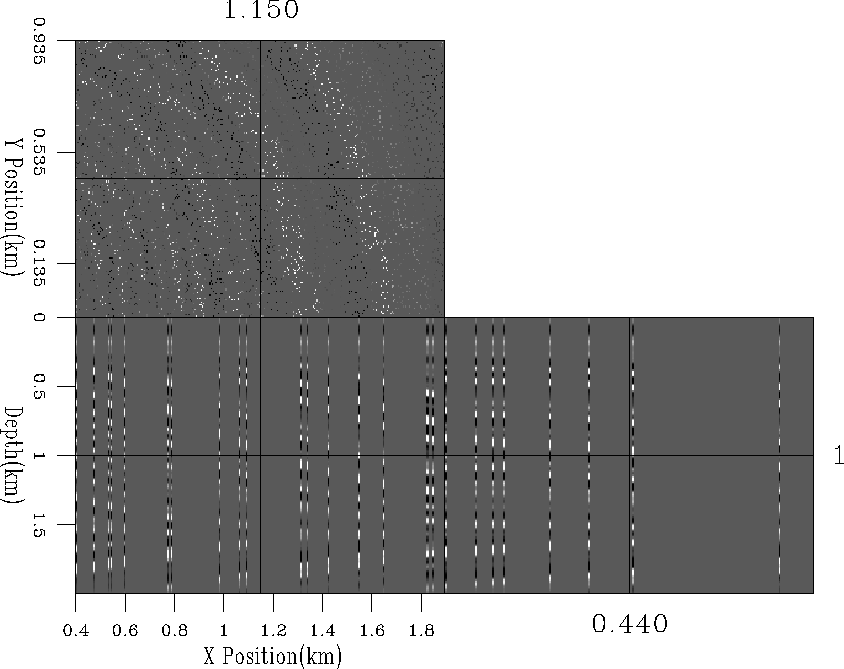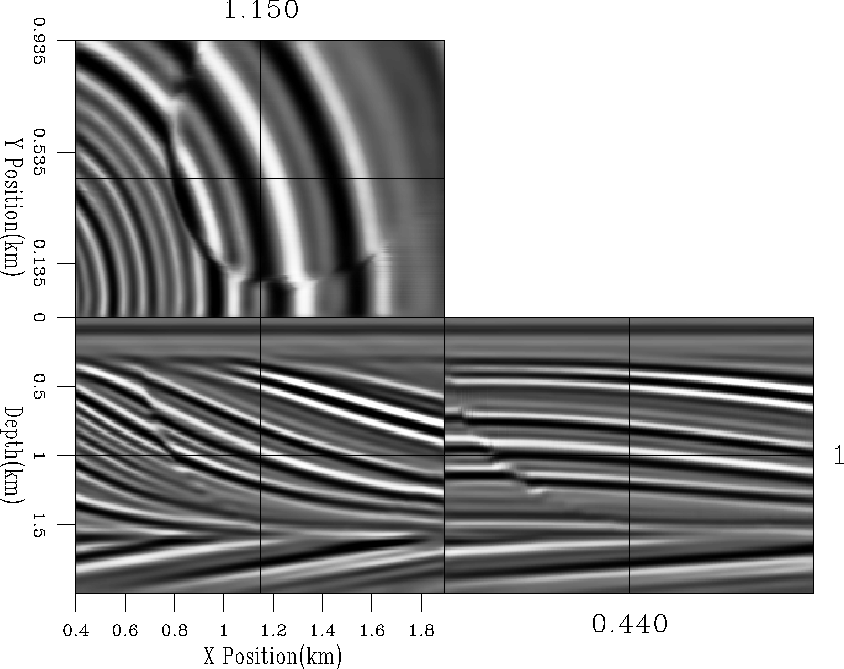




Next: Conclusions
Up: Clapp: 3-D steering filters
Previous: 3-D extension
The missing data problem is probably the simplest to understand and
interpret. Following the methodology of Claerbout (1999) we solve
the
problem in its preconditioned form using
|  |
(3) |
| |
where:

- is a binned version of our known points

- is the known data selector

- is the preconditioning operator (in this case equation (2))
- p
- is our preconditioned variable.
To test the interpolation I used the `qdome' dataset (Figure 4).
I began by zeroing 95%
of the original data (Figure 5)
in vertical sections (somewhat simulating well logs).
To obtain the pxz and pyz dip field I used the same methodology
as Fomel (1999) estimating the dip field
from the known data using a non-linear estimation scheme.
mod-orig
Figure 4 3-D qdome model from Claerbout (1999).




 mod-in
mod-in
Figure 5 Decimated qdome model.
95%
of the original traces (Figure 4) have been thrown away.
![[*]](http://sepwww.stanford.edu/latex2html/movie.gif)





Using the calculated dip field I then constructed  and
and  and
iterated 50 times using fitting goals (4).
Figure 6 shows the resulting interpolation. In general
the 3-D steering filters did an excellent job recovering the original data. There is some
lower frequency behavior around the fault boundaries but the fault
position is still quite obvious.
and
iterated 50 times using fitting goals (4).
Figure 6 shows the resulting interpolation. In general
the 3-D steering filters did an excellent job recovering the original data. There is some
lower frequency behavior around the fault boundaries but the fault
position is still quite obvious.
mod-out
Figure 6 Interpolated qdome model starting
from the data in Figure 5. Note how it is a little lower
frequency than Figure 4 but otherwise a near perfect
interpolation result.
![[*]](http://sepwww.stanford.edu/latex2html/movie.gif)










Next: Conclusions
Up: Clapp: 3-D steering filters
Previous: 3-D extension
Stanford Exploration Project
9/5/2000


![[*]](http://sepwww.stanford.edu/latex2html/movie.gif)
![]() and
and ![]() and
iterated 50 times using fitting goals (4).
Figure 6 shows the resulting interpolation. In general
the 3-D steering filters did an excellent job recovering the original data. There is some
lower frequency behavior around the fault boundaries but the fault
position is still quite obvious.
and
iterated 50 times using fitting goals (4).
Figure 6 shows the resulting interpolation. In general
the 3-D steering filters did an excellent job recovering the original data. There is some
lower frequency behavior around the fault boundaries but the fault
position is still quite obvious.

![[*]](http://sepwww.stanford.edu/latex2html/movie.gif)